Mary Tuke – The Mother of York’s Chocolate Industry
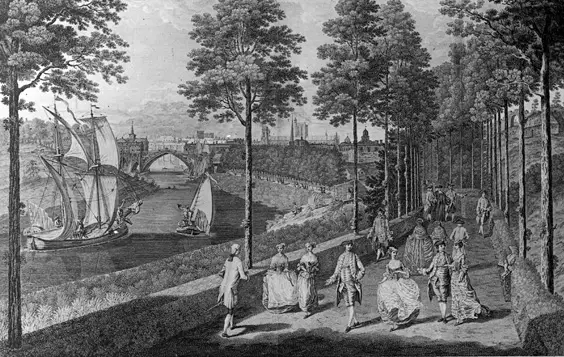
By Summer Strevens
If we are to examine the true circumstances surrounding the ‘birth’ of York as ‘Chocolate City’ we must trace the conception of commercial confection back to the year 1725. To a remarkable woman who was the earliest strand woven into the tapestry of York’s confectionery empires.
Mary Tuke is a 30-year-old spinster when she takes the decision to open her own grocery shop in Walmgate in the city. Her mother Rebecka had died two years previously and she is now head of the Tuke household. Her father William having passed away in 1704.
In 1725, the York in which Mary sets up shop is, though still the premiere city of the north, actually declining in commercial importance. It is in the ever increasing shadow of the other rapidly emerging industrial centres, like the growing mill towns of Lancashire and textile centres of Leeds, Bradford and Halifax.
“Gentrified classes”
Nevertheless York is still quite large. Proportionally a market town rather than an industrial centre. In spite of York’s economic stagnation, the city possesses the qualities that will make it such a fashionable destination in the Georgian ‘age of elegance’. The popularity of the new Assembly Rooms on Blake Street, the Theatre Royal, the New Walk, a fashionable promenade created alongside the Ouse, York Races and something of an emerging tourist industry, all promote a social and economic climate in which the seeds of the chocolate industry will grow and flourish. Eventually ripening into the three indisputably household names of Rowntree’s, Terry’s and Craven.
At the time Mary embarks on her commercial endeavour. The sophisticated consumer economy that is to grow and support York throughout the Georgian era is only just beginning to emerge. The past hindrances of the restraining politico-economic systems enforced by the medieval Merchant Adventurers, which had proved so suffocating to developing trade, are now on the wane. There is an increase in freedom and opportunity to exploit the dynamic element of the city’s new market opportunities. Namely the growth in the numbers of service industries, of luxury craftsmen and within the retail sector. A direct response to the growing demands of the gentrified classes flocking to Georgian York as the esteemed destination for the ‘polite and elegant’.
“Confectionery capitalism”
The city is already home to a diverse range of traditional trades. There are butchers, bakers, brewers, coopers, tailors, shoemakers, comb makers and pipe makers – the tobacco variety that is. And, of course, York is the seat of ecclesiastic primacy for the north of England. The splendour of the Minster indicative of the office of Archbishop of York as the second highest prelate in the land. Though this divine designation will have little bearing on Mary’s religious concerns. She is a part of the Quaker community that has developed into the York Friends. Quakerism is to be one of the dominating factors amongst the collaborative influences that are the catalyst toward confectionery capitalisation.
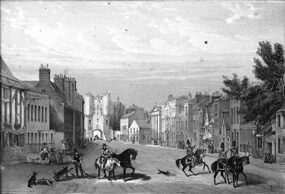
Blossom Street looking toward Micklegate – emerging new classical façades juxtaposed with older frontages. (Courtesy of The Evelyn Collection)
Outside of the city walls the open countryside is giving way to ‘modern’ houses. Elegant residences with tall brick facades punctuated by sash windows and smart front doors beneath a fashionable fanlight. All indicative of York’s progression into an entity of Georgian elegance so vital to the early development of the ‘Chocolate City’.
Yet ancient overhanging timber frame dwellings still proliferate within York’s walls. all set to a medieval street pattern. The London stagecoach rumbles into the old city beneath Micklegate. Which, though in dire need of structural repair, still retains its barbican, like Walmgate’s today. Micklegate’s crumbling barbican is eventually demolished in 1826.
“Exotic consumables”
After a twenty nine and a half hour journey, the High Flyer or the Wellington arrives from London. It carries weary passengers who disembark into a city of medieval streets. They mingle with recently added Georgian facades, brooded over by the towering Minster. Noisy with itinerant tradesmen calling for custom – knives to grind or milk fresh from the cow; gossips, beggars, shoppers and tradesmen add to the din of market carts lumbering over the busy uneven roads. Although congestion and rough carriageways are later ameliorated by a special Act of Parliament imposing a five shilling fine on anyone leaving a waggon or carriage unattended.
Amongst this mixture of Mediaeval gables and burgeoning Georgian terraces then, Mary Tuke’s grocery shop on Walmgate opens for business. In a street occupied by neighbouring traders, inn keepers, rag merchants, woollen warehouses and other retailers typical of the district and period. Elsewhere in the city Coffee and Chocolate ‘houses’ increase in number and popularity. During the 18th century imported foodstuffs come to play a central role in everyday life and consumption.
As well as stocking the specialities of tea, coffee and chocolate other ‘exotic’ consumables such as sugar, spices, tobacco and snuff are available from Tukes Grocers. Chocolate sells in cakes which have to be boiled with milk or water. The privileged inhabitants of Bootham and Micklegate consume it at breakfast. It is taken from an elegant pot, like those of the local creamware manufactured in Leeds. The consumables retail alongside all the usual grocery staples on offer. Often in ranges at a price for the discerning gentry’s table, to goods within the reach of poorer customers, from luxury to utility.
“Humble retail beginnings”
Certainly the confectionery industry grows into a lifelong heritage for York and its people. It gives the city the entirely justifiable claim to the title of Britain’s official home of chocolate. It is firmly rooted in Mary Tuke’s humble retail beginnings. Could she ever have imagined her shop would be pivotal to one of the great names in chocolate history? The Rowntree’s Quakers themselves hail from a grocery background.
Thanks to the fortitude of this Quaker businesswoman she assures the continuation of the Tuke grocery business to successive generations of her family. She surmounts various obstacles in her path. Not the least of which are the trading restrictions of the Merchant Adventurers Company. Their imposition of fines and threats of imprisonment continue for near on eight years. In turn, her business evolves into the Rowntree empire. It is so impactful, economically and socially on York itself, along with the homegrown confectionery competitors of Terry’s and Craven.
Top image: The New Walk (Courtesy of The Evelyn Collection)
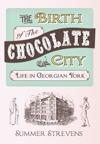
 ‘The Birth of the Chocolate City: Life in Georgian York’ by Summer Strevens is published by Amberley Publishing and is available through their website or via Amazon
‘The Birth of the Chocolate City: Life in Georgian York’ by Summer Strevens is published by Amberley Publishing and is available through their website or via Amazon
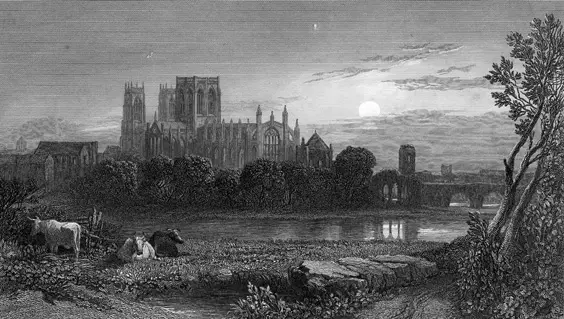
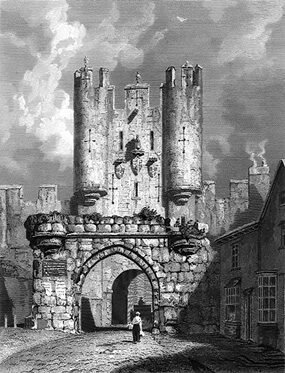
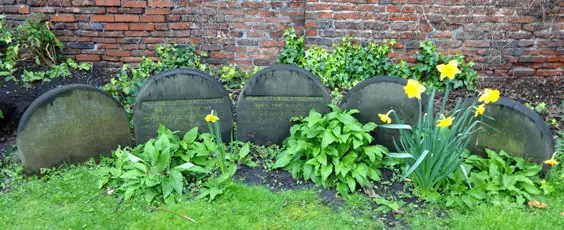










Where would I find out more about Mary Tuke? There is very little about her on the internet, not even a picture of her. She seems like an amazing lady.
I am descended from the Tuke family and find this information most interesting. Agood source of info is a book callled the Tukes of York by wILLIAAM Sessions.